There are approximately 180,000 temples and shrines in Japan. On a per capita basis that’s more than the number of churches and synagogues in the US. Like churches and synagogues, temples and shrines are very different.
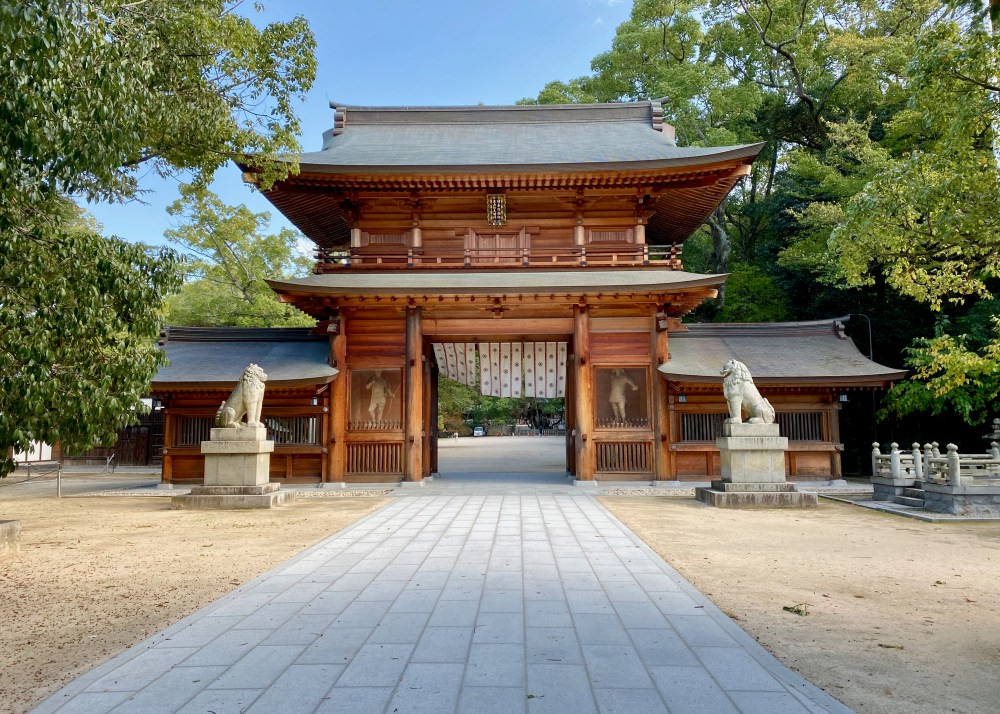
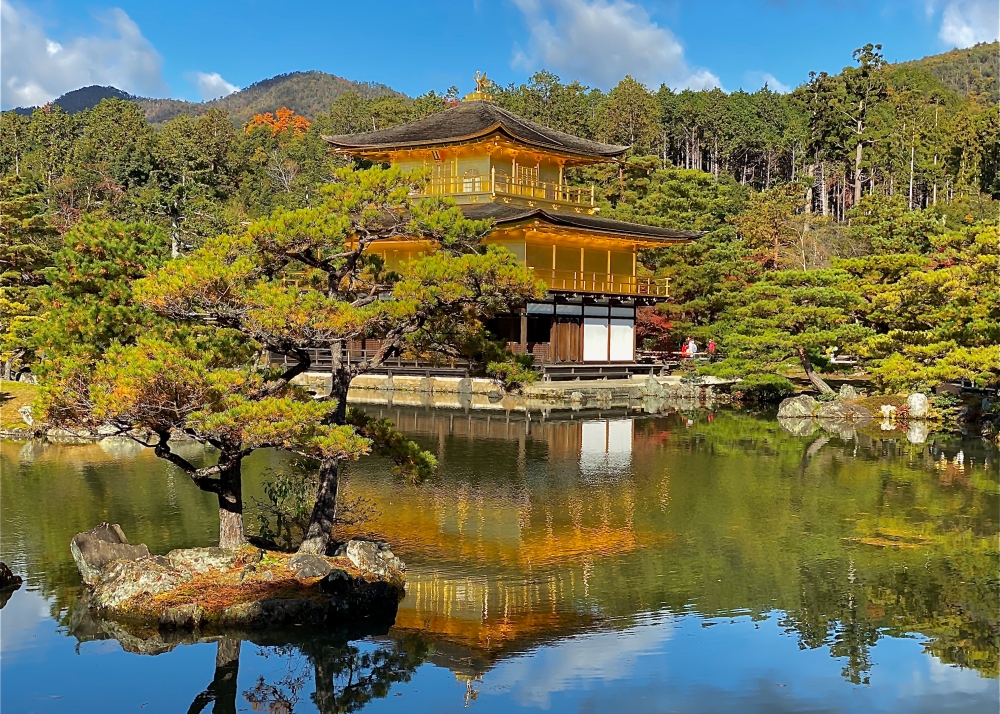
Temples are associated with Buddhism, which originated in India and reached Japan via China about 1500 years ago. The main focus of worship in a temple are the beliefs and teachings of its religious and spiritual leader Buddha, and every temple has at least one statue of Buddha in it. Buddhist temples are ornate and services are conducted by monks. In every temple you will find burning incense, which is used to purify the space and prepare the occupants for enlightenment (Val and I have a broad definition of enlightenment.) Buddhists believe that our body is only a temporary place for our spirit to reside, and that good intent and action leads to good karma and a happy spirit, but bad intent and actions leads to bad karma and a bad life and rebirth. Buddhist rituals are therefore often observed at funerals or when honoring deceased loved ones.


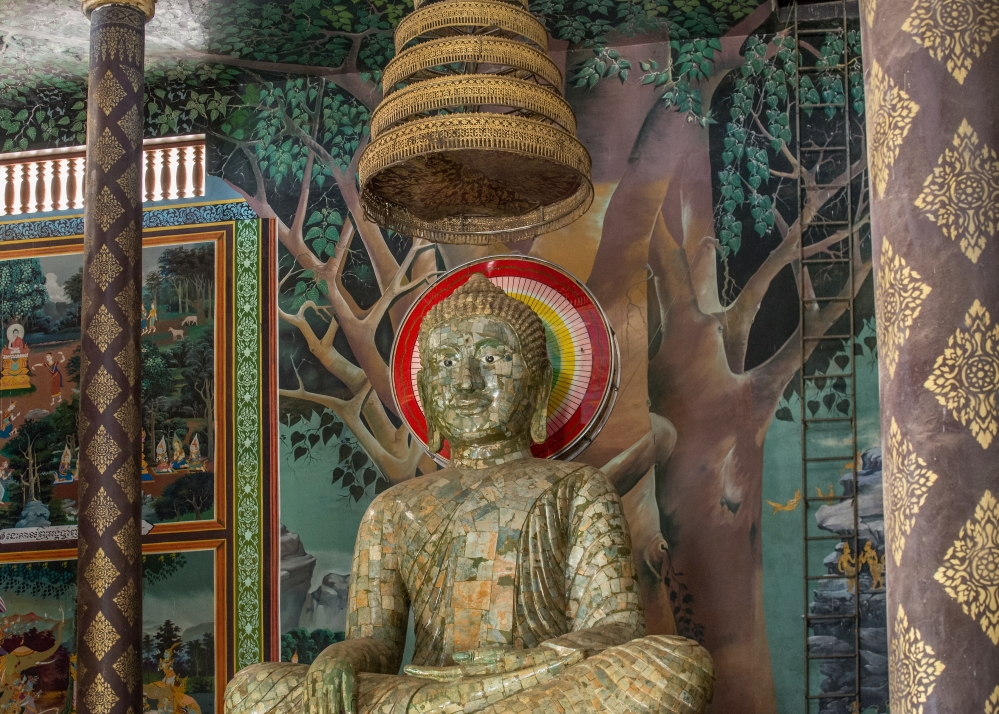

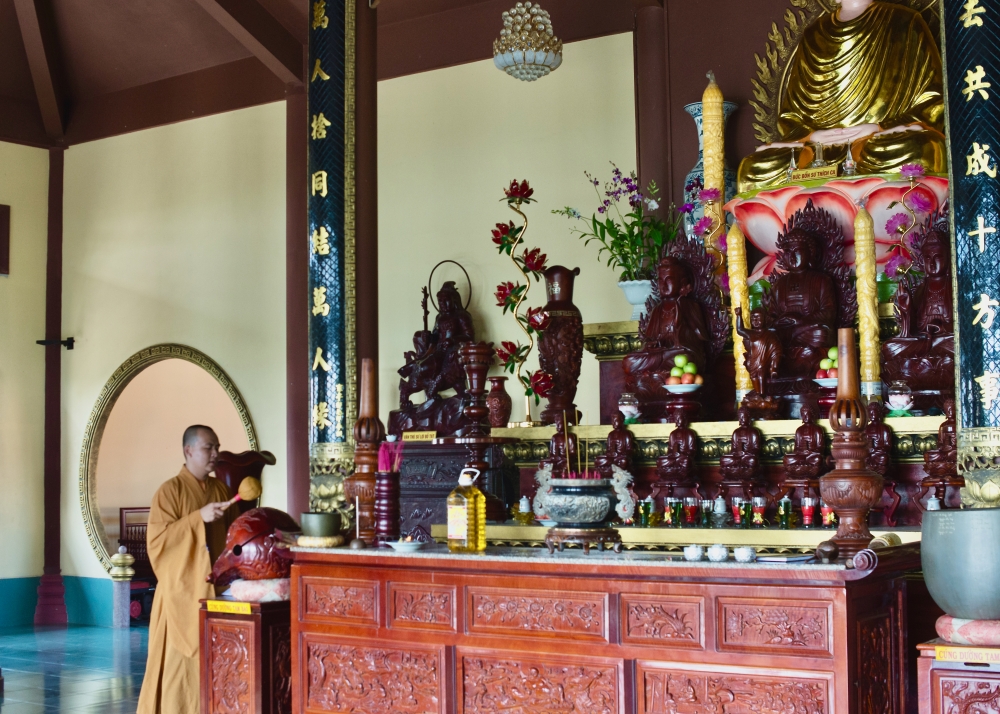
Shrines are associated with Shintoism, which originated in Japan thousands of years ago. Shinto is a unique religious mythology because there is no founder, no written scriptures or text, no religious law or moral code and a very loose priesthood. Shinto beliefs are transmitted from generation to generation by the rituals practiced together in families or other group activities like festivals. A shrine is sacred place to “worship,” or more accurately “acknowledge” the spirits or “kami,” of which there are hundreds of thousands. Kami may represent a specific deity like the goddess of rice, or an ancestor, animal, rock, mountain, river or anything found in the universe. Harmony in the universe is the desired outcome. Shinto shrines have a gate, ropes, non-human guardians and often ponds. The gate or “torii” has a typical shape and marks the boundary between normal and sacred land. Decorative ropes are used on torii gates, or any other structure, for the same protective reason. Torii gates can be very large or small.


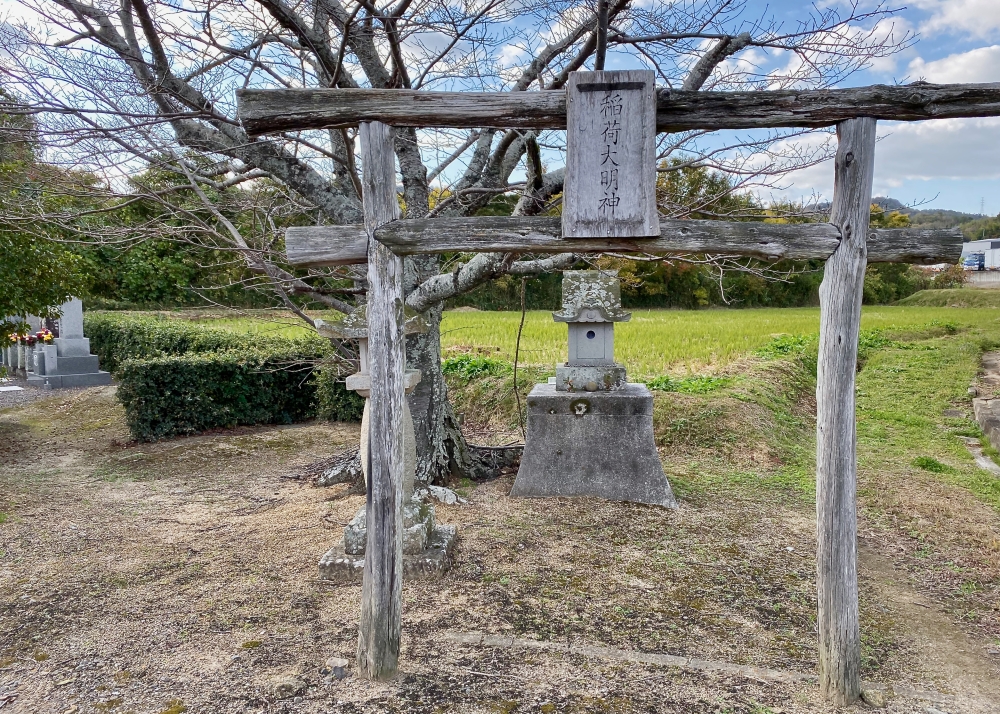
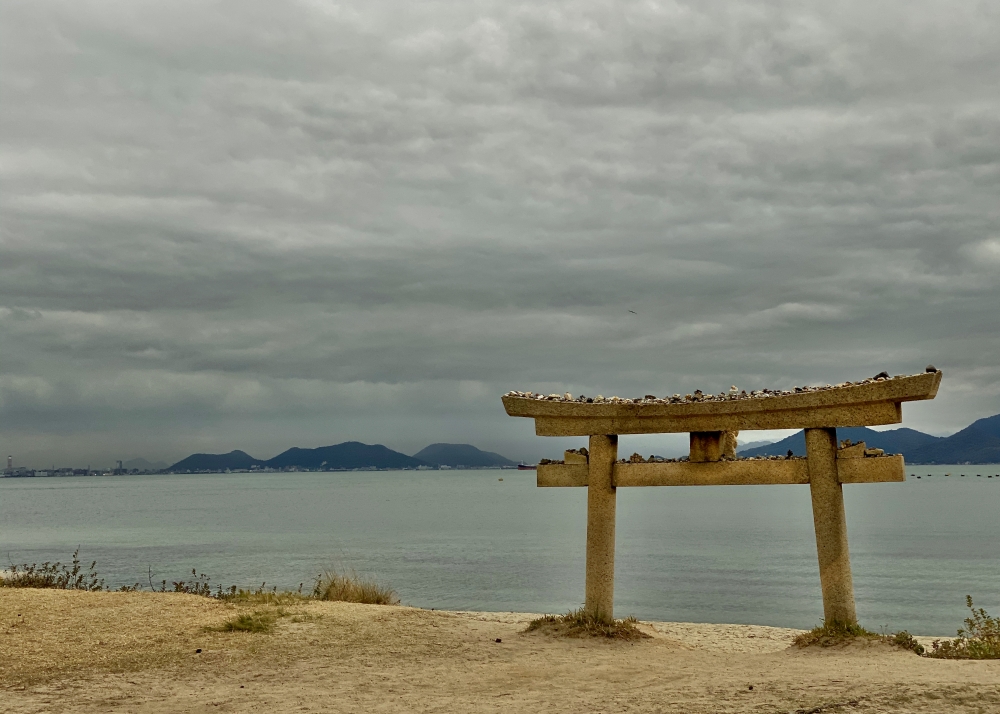
Each shrine is dedicated to a specific kami and contains a private “back room” called the “hondon” where the kami lives. In front of this area is a simple “hoiden” or public place where worshipers can pray.


Red colors are believed to drive away evil spirits, so the gates are often red or orange. Animals also guard the kami spirits, and are the kami messengers. To be extra safe, an animal guarding a kami may also be wearing a red scarf.

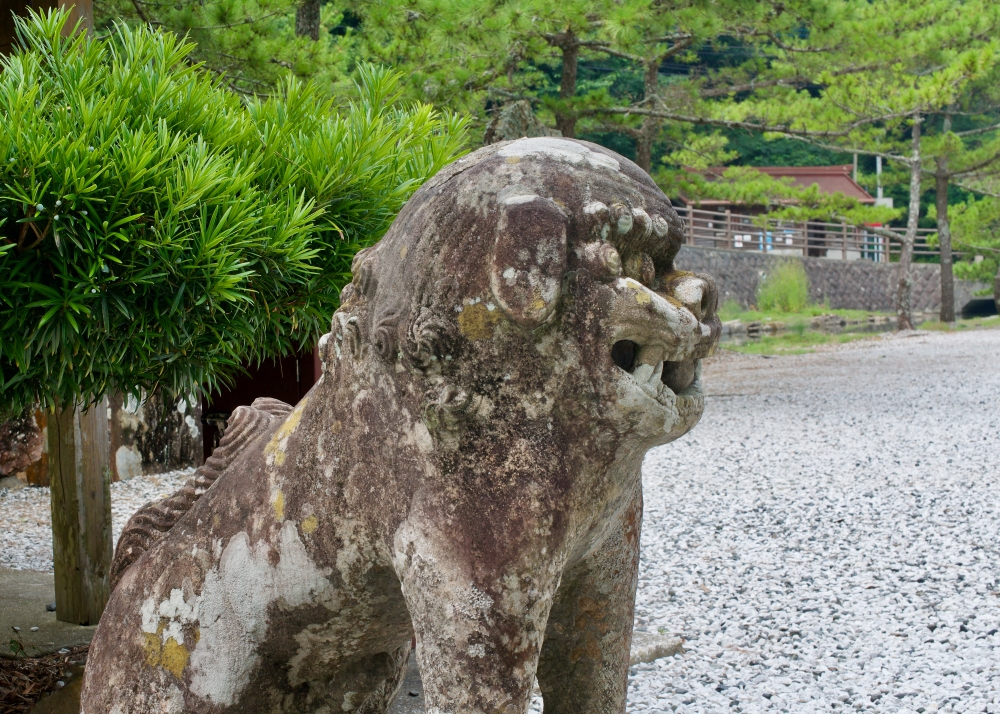
Shinto is a celebration of all things in nature (animate and inanimate) so Japanese tend to go to shrines for celebration of life events such as a birth or a wedding, or to honor a beautiful river or favorite relative or pet. Thus, a common saying in Japan is that you go to a shrine when you’re born (or get married) and a temple when you die.
Most Japanese do not consider themselves religious, but they are spiritual and visit temples and shrines frequently. Japanese mythology is inclusive and endorses both Shintoism and Buddhism, so don’t be surprised if a tour book sends you to a shrine and you find a temple there as well.




We’ve had a wonderful time visiting both shrines and temples. It’s clear that both beliefs have shaped Japanese culture, but Shinto is the dominant faith and is responsible for much of the homogeneous nature of Japan. The four affirmations of Shinto are:
- Traditions are transmitted from generation to generation by rituals practiced by families and other groups,
- Everything in the universe is sacred,
- Physical cleanliness is good, and
- Kami are sacred and should be worshipped.
As we’ve learned more, it seems likely that hardcore environmentalists and progressives like us would be very at home in the Shinto belief system. At the same time, we’ll hedge our bets and will continue to build up as much good karma as possible so that Buddha will let us come back later better off than we are now. Maybe as a pair of cats.
The desired outcome of Shinto practice is to create a sense of harmony within the universe. When nature is shown respect, the universe is better for all. This belief translates into behavior in Japanese society where people believe everyone should do what is expected of them, address people in certain ways, show love and respect for others and vice versa. Japanese believe that this “collective culture” depends and putting any group ahead of the individual’s needs. Harmony is called “wa” in Japan, and making sure that everyone’s “wa” is cared for animates most interactions between people and the environment.

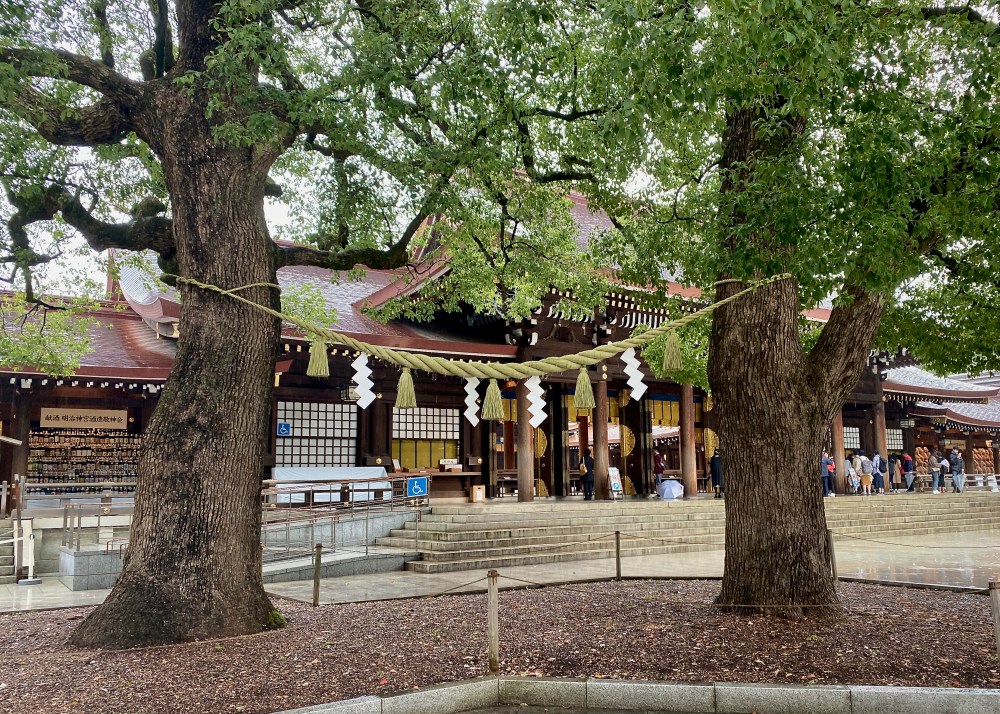

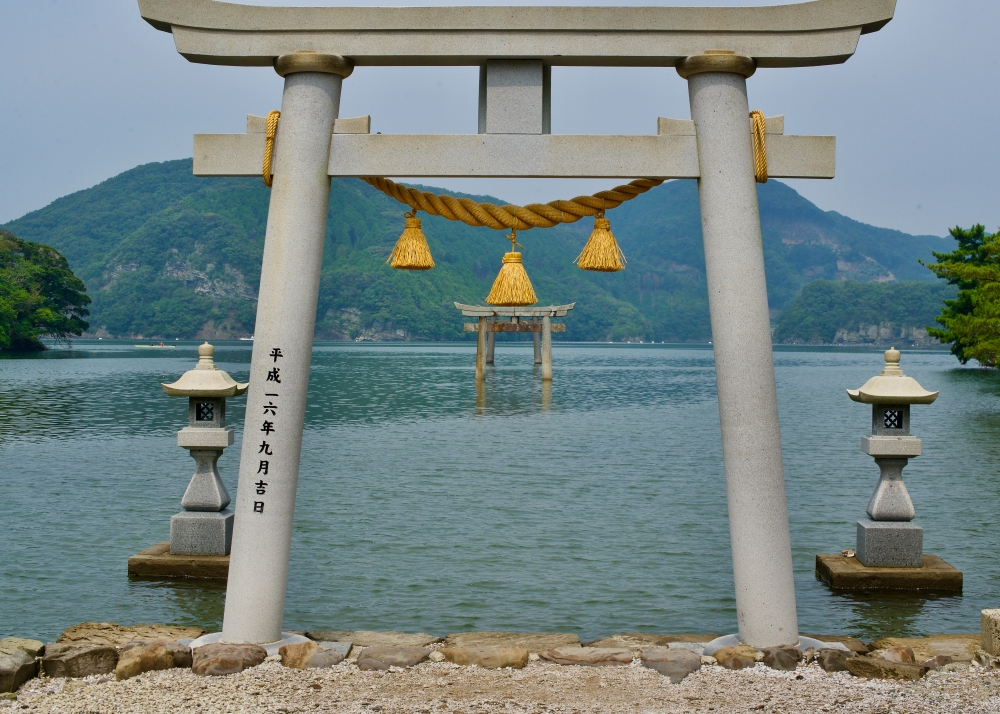
Confusing to us at first were the tall structures we saw at various sites as shown below. These are called pagodas and are part of the temple or shrine. They house documents, valuable belongings or other items used at the temple or shrine.
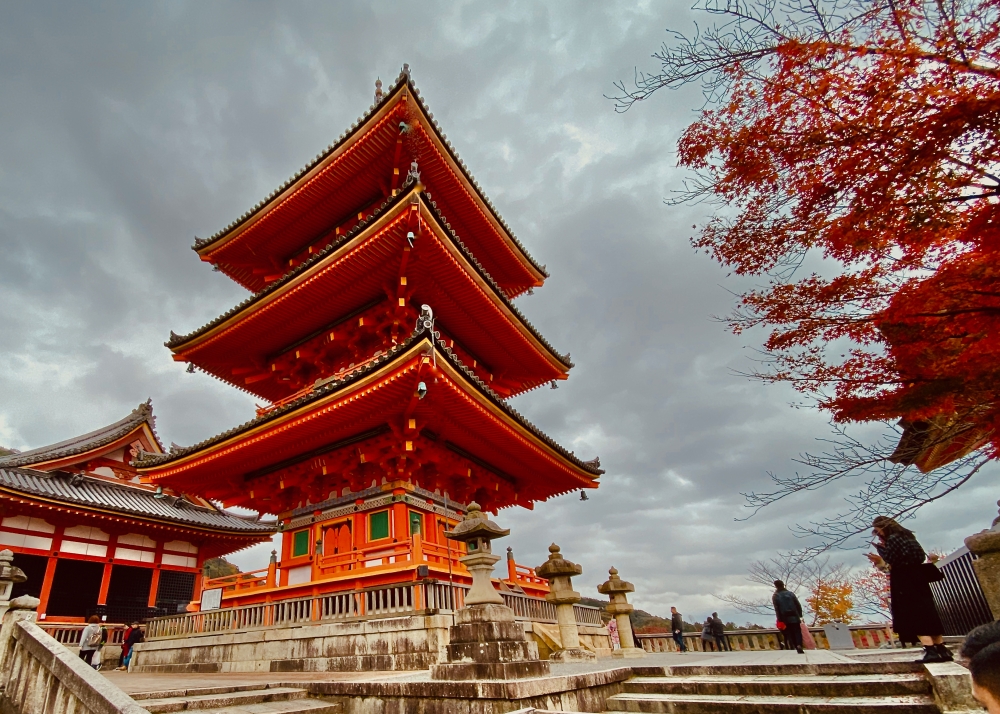
Physical cleanliness is an attribute of Shintoism and the cleansing ritual is observed at shrines. The hands and mouth are rinsed before entering. This practice also carries over into another Japanese trait, frequent bathing.
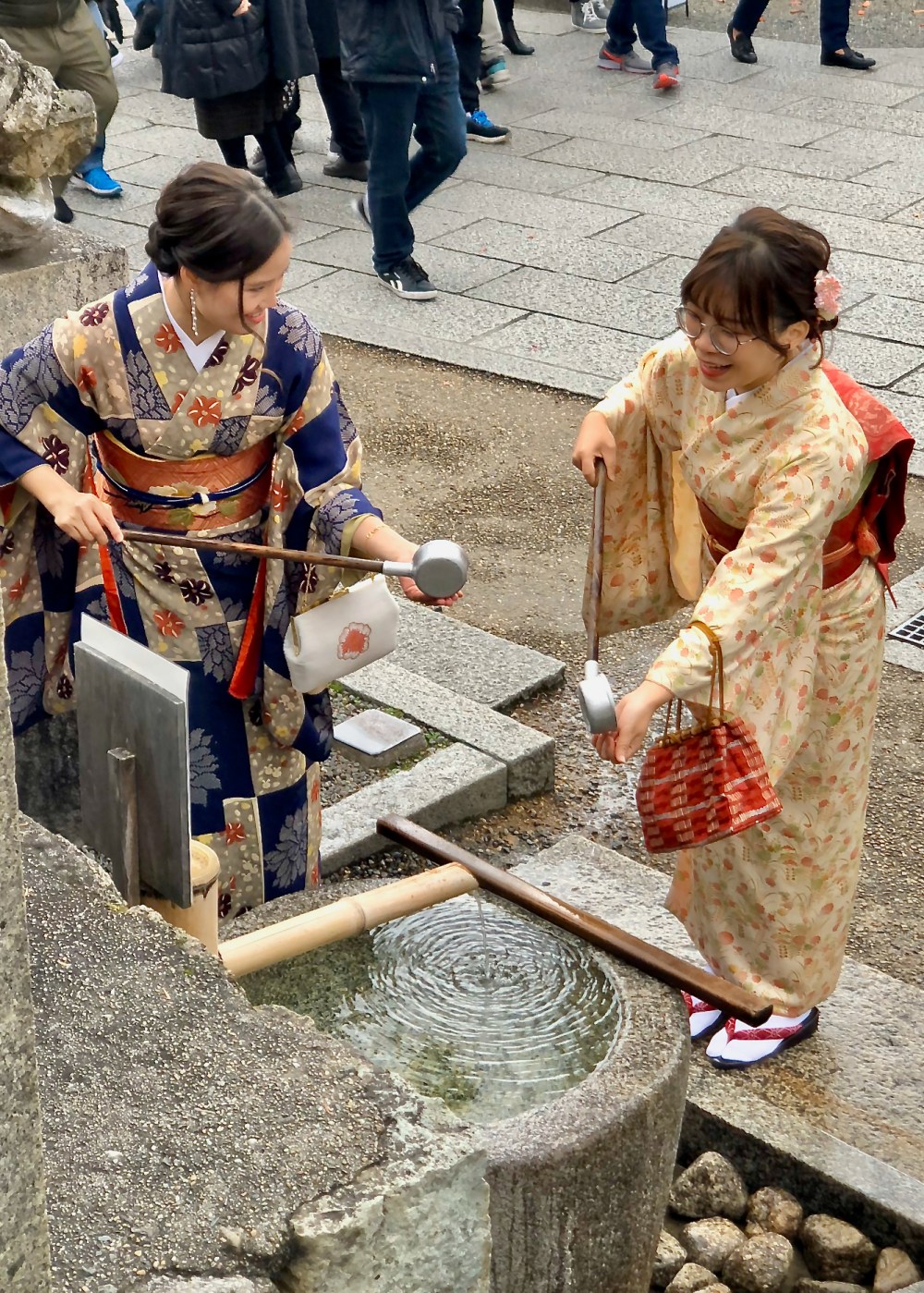
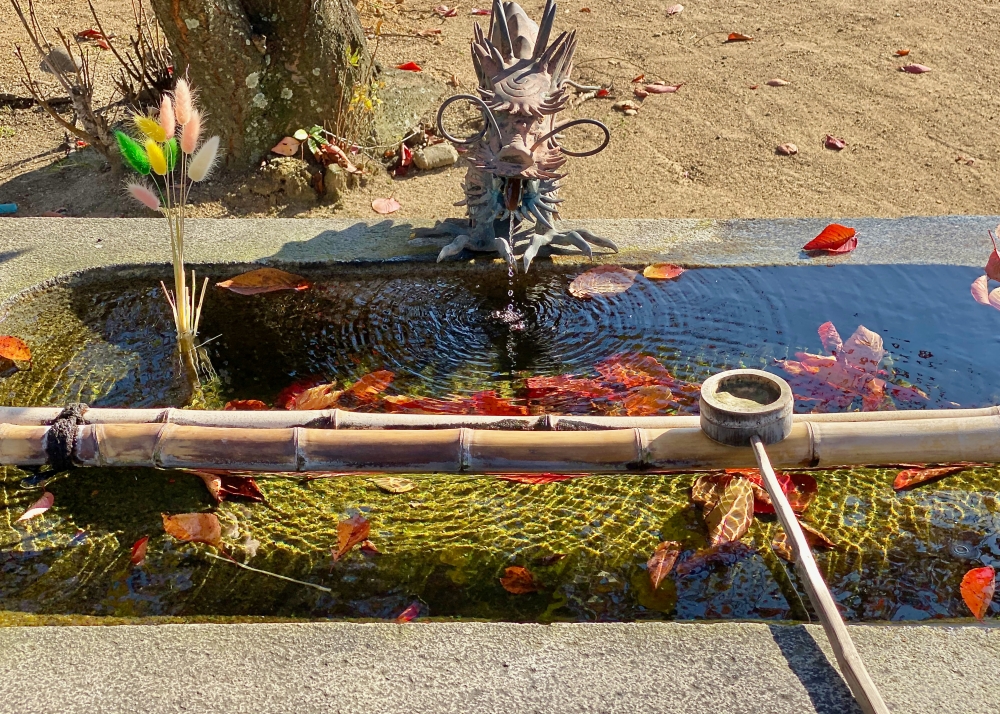
Once a shrine is built, it is either maintained by those who built it, the community, or for famous shrines, the government. If the family moves away and no one takes responsibility, then the shrine is abandoned and falls into disrepair. These sites are all over Japan.

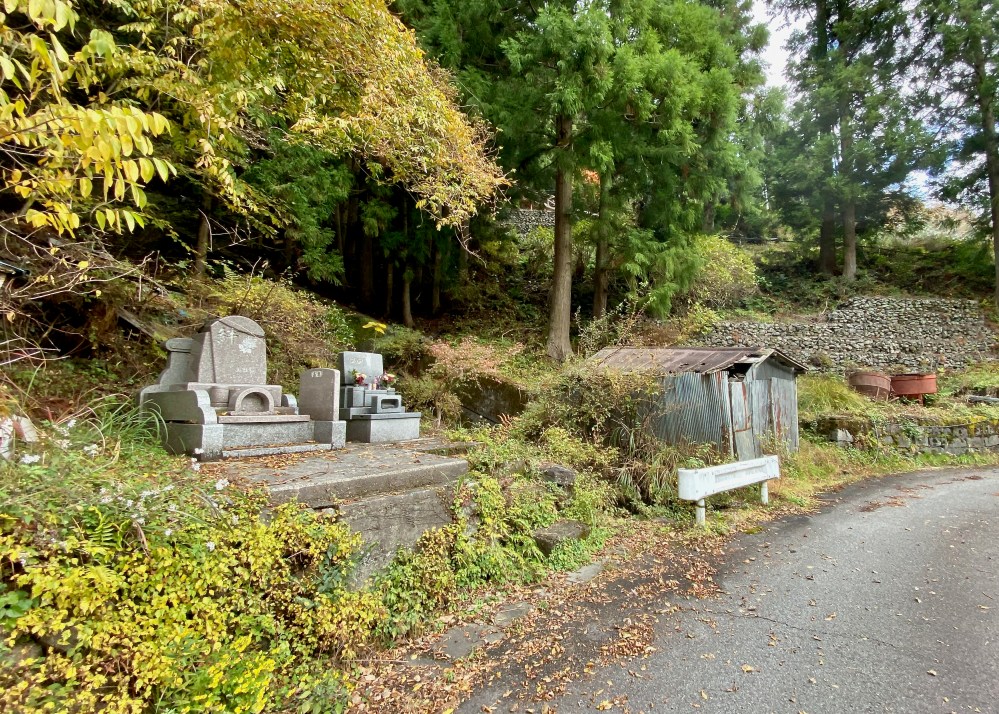

Bells are found at both temples and shrines. Usually the bells at shrines are used to attract the attention of the kami spirits, and at temples it is thought that ringing the bell will make your wishes come true. We rang them because it was fun.
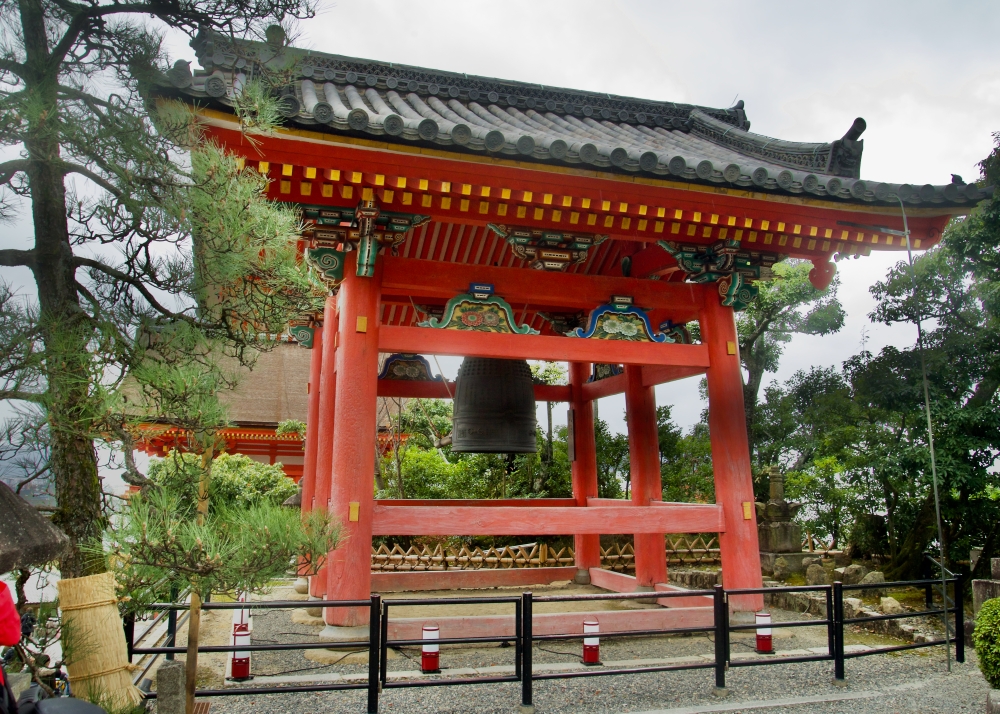
Like most cultures, the Japanese can do things to excess, as in the Fushimi Inari Shrine with its hundreds of torii gates.
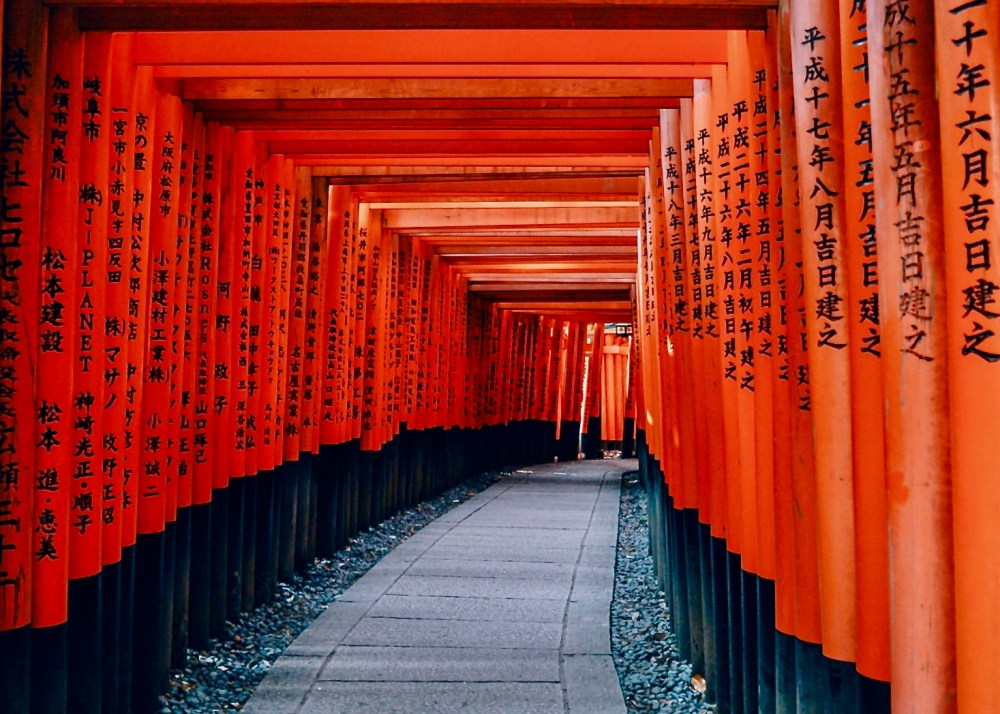
Or at the Mejii Jingu Shrine where local sake producers donate barrels of sake to the shrine and, as a gesture of friendship with wine producers in France, barrels of great French wine.
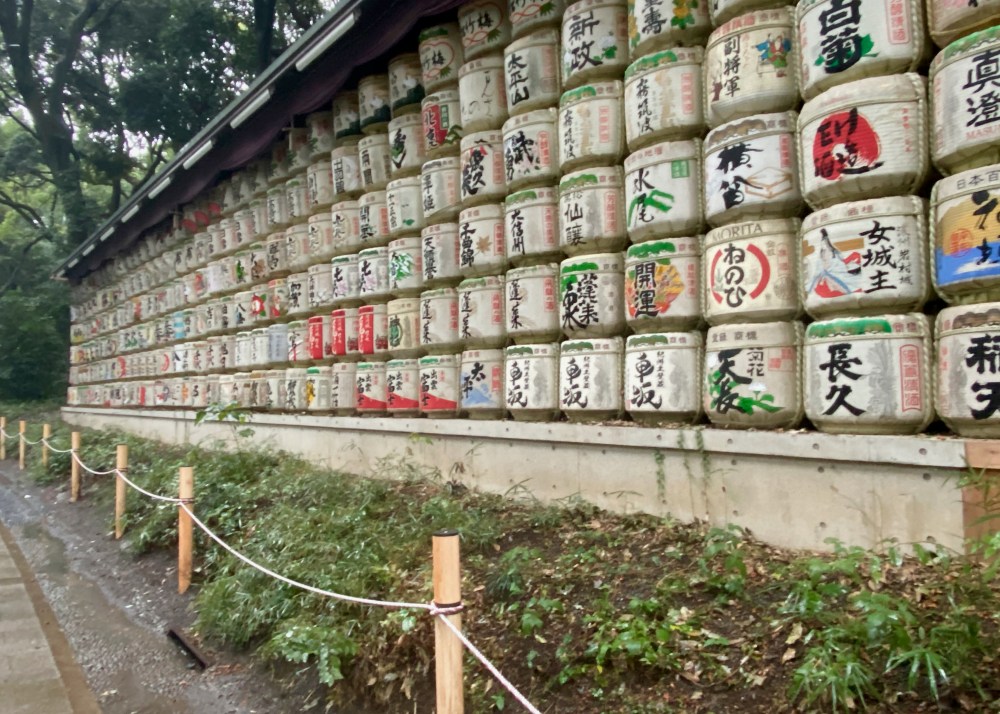
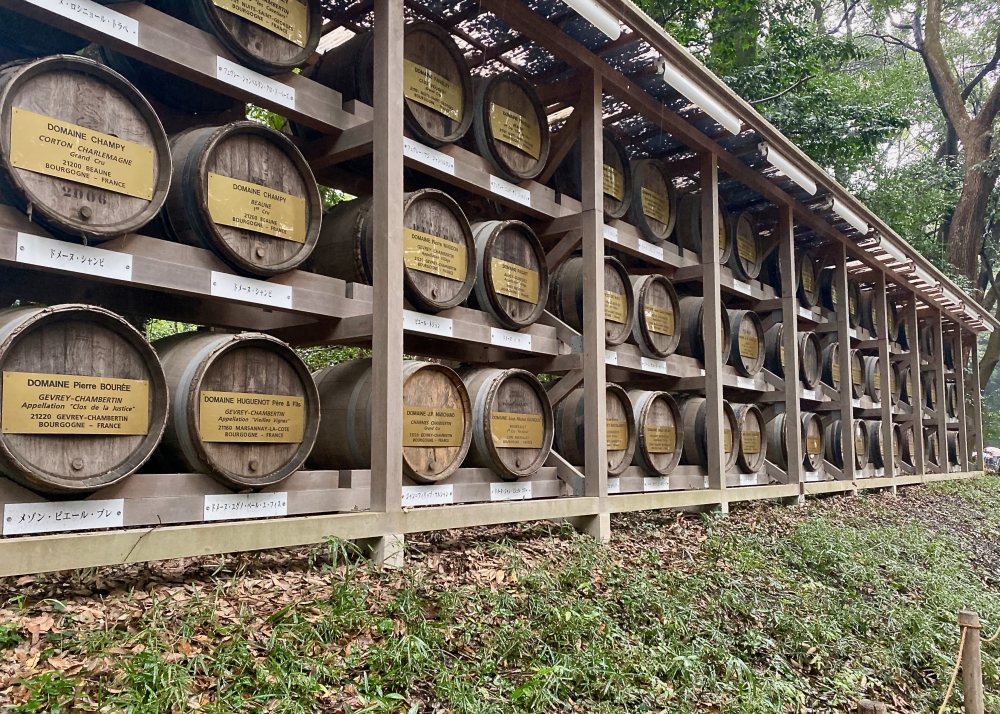 Pardon the classroom discussion about two important world religions, but like most Americans we had no understanding of the importance of Shinto and Buddhism on Japanese culture. Understanding the background has given us a deeper appreciation, not only of the sites, but also of the Japanese people.
Pardon the classroom discussion about two important world religions, but like most Americans we had no understanding of the importance of Shinto and Buddhism on Japanese culture. Understanding the background has given us a deeper appreciation, not only of the sites, but also of the Japanese people.
And do what you can to improve someone or somethings “wa” today and everyday, and yours will benefit, too…….

Really nice Stan, beautiful photos. I like the quote that roughly goes “religion is for those hoping to go to heaven, and spirituality is for those who have walked in hell”. Also, since Buddhists worship the teachings of Buddha, not Buddha himself, there is a valuable saying applicable beyond Buddhism – “If you meet the Buddha on the road, kill him”, since there is no possible claim to being Buddha, just a commitment to a path of Buddha’s teaching.
Really enjoyed your talk at the Seattle Yacht Club!
Thanks Barbara, that’s so good to hear!
hi Stan and Valerie
how are you these days?
we’ve been thinking of you during these crazy times, when the world – and most peoples brains – went into shutdown.
Hope you are safe, happy and healthy.
Hi there! This comment got away from us, we moved on the day you posted it. Our boat got “stuck” in Japan… or rather, we got stuck in the States after coming home for a visit and Japanese visa-refresher at the end of the year. Covid hit before we were scheduled to return, so our plan to make the passage from Japan to Alaska has been delayed for a year, while the Buffalo sits in Fukuoka. Otherwise we are well, and thanks to Covid, we decided to move to an actual house from our tiny condo, with a full kitchen and a great view. That’s keeping us busy while we wait. We hope you are keeping busy as well!
hi Valerie, glad to hear y’all are well!
Hopefully, the situation normalizes soon so you can rejoin your boat.
also many thanks for providing all the pictures of the FPB701 in earlier blogs, I now have 30 FPB70 pics trading places as screensaver, to help further our dreams.
My wife and I are actively working towards retirement the next two years and know we will be cruising.
While the 70 is our ultimate dream boat, we know the statistical likely hood of finding a 64 is much bigger….
We had an opportunity to visit “Iceberg” when she was in Imperia and were very impressed by the build quality as well as general thoughtfulness that went into creating this vessel. unfortunately, Iceberg is definitely to big for us, and a touch outside our budget 😉
Could you get in touch by email, we have questions similar to Andrew T….. and would just like to talk to you directly, and a bit less public
thx
Christian
Hello! Like yourselves at one time, my wife and I are complete greenhorns but are seriously considering pursuing cruising, specifically aboard an FPB if we can find a nice used one. To that end we have a number of questions such as what to inspect carefully , realistic budgeting etc.
Would you have any pointers to resources relevant to the a cruising couple on an FPB? Or better yet, if you have the time could you email me? Thanks, great blog and hope you are having a great time!
Hi Andrew, Congratulations on getting close to your cruising dreams! Yes I will e-mail you, so we can address any specific questions you have. Cheers!
Hi Valerie,
Thanks so much! I look forward to your email!
Retired after 35 years commercial fishing east of Dutch Harbor. Now have 57 foot yacht in Sitka. If you want to chat about the Eastern Aleutians, Alaska Peninsula, send me an email. I missed the chance to check out an FPB in Sitka a year or two ago, I won’t make that mistake again if you’re coming through. Moved to MT fm Mercer Island…in ’92. We greatly enjoyed our trips to Raja Ampat, Papua NG, Palau. Special places, times.
Great blog! After selling our Deerfoot 62, Emma (sister to Steve and Linda’s Intermezzo II) we are in the hunt for a FPB 64. I’d love to communicate with you more on this topic if you are willing, email me. Hope you are loving Japan.
All the best,
Bob